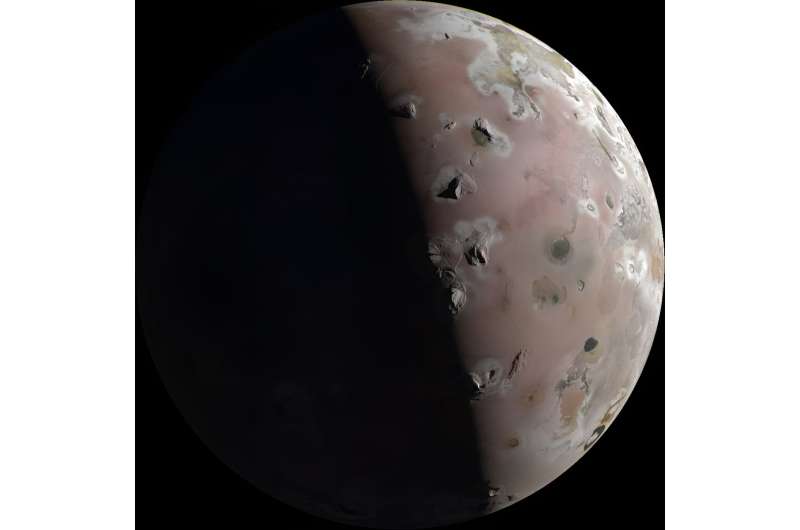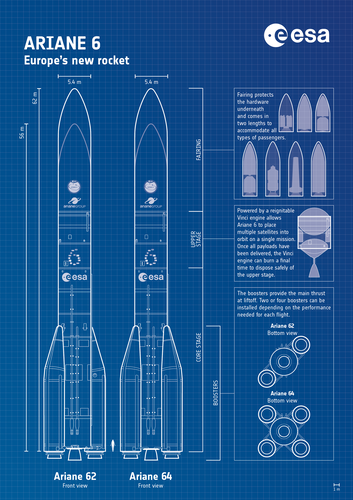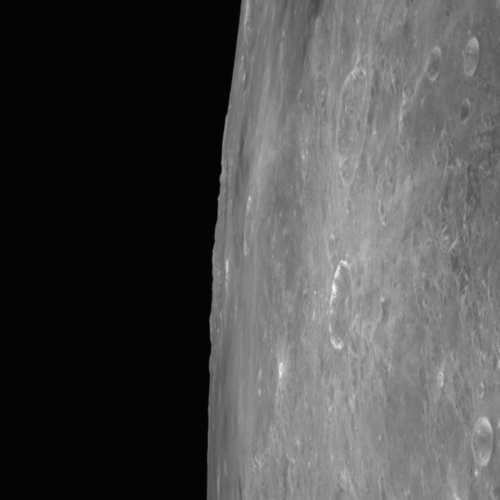
Copernical Team
Comparing two proposed NASA missions to Jupiter's moon Io

Thanks to NASA's Juno mission to the Jupiter system, we're getting our best looks ever at the gas giant's volcanic moon Io. Even as Juno provides our best views of the moon, it also deepens our existing questions. Only a dedicated mission to Io can answer those questions, and there are two proposed missions.
Io is well-known as the most geologically active world in the solar system, and it's not even close.
Ariane 6 blueprint
 Image:
Ariane 6 blueprint
Image:
Ariane 6 blueprint First views from Juice’s science camera

Since ESA’s Jupiter Icy Moons Explorer (Juice) flew by the Moon and Earth earlier this week, we’ve seen images from its monitoring cameras and we’ve seen images from its navigation camera. Today we reveal the first images from its scientific camera, JANUS, designed to take detailed, high-resolution photos of Jupiter and its icy moons.
Week in images: 19-23 August 2024

Week in images: 19-23 August 2024
Discover our week through the lens
AI-Powered Robot Dog Enhances Detection of Invasive Fire Ant Nests
 A collaborative team of researchers from China and Brazil has developed an innovative method using a robotic dog and artificial intelligence (AI) to detect and control nests of the Red Imported Fire Ant (RIFA), a pest that poses significant environmental and economic threats globally. The research, published in the journal *Pest Management Science*, showcases how the integration of Xiaomi's 'Cyb
A collaborative team of researchers from China and Brazil has developed an innovative method using a robotic dog and artificial intelligence (AI) to detect and control nests of the Red Imported Fire Ant (RIFA), a pest that poses significant environmental and economic threats globally. The research, published in the journal *Pest Management Science*, showcases how the integration of Xiaomi's 'Cyb Kuva Space launches first commercial hyperspectral satellite Hyperfield-1 via SpaceX
 Finnish company Kuva Space has successfully launched its first commercial microsatellite, Hyperfield-1, aboard SpaceX's Falcon 9 smallsat rideshare mission from Vandenberg Space Force Base in California. The satellite has established initial contact, marking the beginning of Kuva Space's expansive constellation plan. This network is set to deliver daily Earth observation by 2027 and achieve unin
Finnish company Kuva Space has successfully launched its first commercial microsatellite, Hyperfield-1, aboard SpaceX's Falcon 9 smallsat rideshare mission from Vandenberg Space Force Base in California. The satellite has established initial contact, marking the beginning of Kuva Space's expansive constellation plan. This network is set to deliver daily Earth observation by 2027 and achieve unin EarthDaily Analytics Secures $1.7M Contract with Malaysia's MySpatial for Advanced Geospatial Solutions
 EarthDaily Analytics ("EDA") has entered into a $1.7 million contract with MySpatial, a prominent geospatial mapping company in Malaysia that serves both government and private sectors. The agreement, which started in July 2024 and spans an initial term of four years, will grant MySpatial and its clients access to EDA's data and analytics capabilities. These resources will support various applic
EarthDaily Analytics ("EDA") has entered into a $1.7 million contract with MySpatial, a prominent geospatial mapping company in Malaysia that serves both government and private sectors. The agreement, which started in July 2024 and spans an initial term of four years, will grant MySpatial and its clients access to EDA's data and analytics capabilities. These resources will support various applic EarthCARE Lidar Reveals Detailed Vertical Profiles of Atmospheric Particles
 Launched in May, ESA's EarthCARE satellite has quickly demonstrated its capabilities, delivering initial images from three of its four scientific instruments. Attention is now focused on the atmospheric lidar, the most sophisticated instrument aboard the satellite.
This advanced lidar has successfully captured intricate 20 km-high vertical profiles of atmospheric aerosols-tiny particles an
Launched in May, ESA's EarthCARE satellite has quickly demonstrated its capabilities, delivering initial images from three of its four scientific instruments. Attention is now focused on the atmospheric lidar, the most sophisticated instrument aboard the satellite.
This advanced lidar has successfully captured intricate 20 km-high vertical profiles of atmospheric aerosols-tiny particles an Brice Grunert: The Great Campaign of the Great Lakes
 Brice Grunert, assistant professor at Cleveland State University in Ohio, is a member of NASA's PACE (Plankton, Aerosol, Cloud, ocean Ecosystem) validation science team. The team, called PACE Radiometry and IOPs for Novel Great Lakes Science (PRINGLS) is one of many groups participating in a campaign set out to gather data around the world to validate the accuracy of information from the PACE sa
Brice Grunert, assistant professor at Cleveland State University in Ohio, is a member of NASA's PACE (Plankton, Aerosol, Cloud, ocean Ecosystem) validation science team. The team, called PACE Radiometry and IOPs for Novel Great Lakes Science (PRINGLS) is one of many groups participating in a campaign set out to gather data around the world to validate the accuracy of information from the PACE sa TrustPoint Secures $3.8M in SpaceWERX Direct-to-Phase II Contracts
 TrustPoint has been awarded two Direct-to-Phase II contracts by SpaceWERX, valued at a combined $3.8 million. These contracts are aimed at advancing the company's GPS-independent ground control segment and developing an advanced position, navigation, and timing (PNT) security application to address critical challenges within the Department of the Air Force (DAF).
The Air Force Research Lab
TrustPoint has been awarded two Direct-to-Phase II contracts by SpaceWERX, valued at a combined $3.8 million. These contracts are aimed at advancing the company's GPS-independent ground control segment and developing an advanced position, navigation, and timing (PNT) security application to address critical challenges within the Department of the Air Force (DAF).
The Air Force Research Lab 
